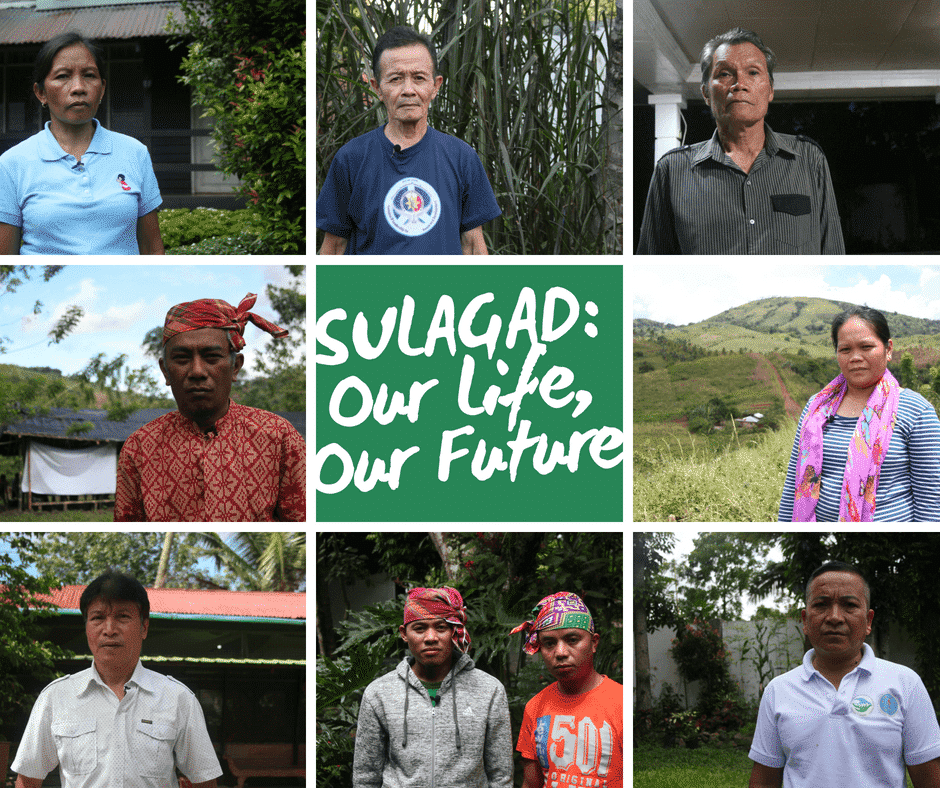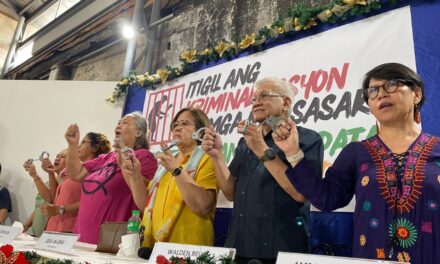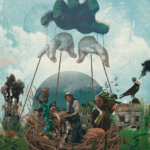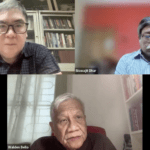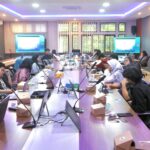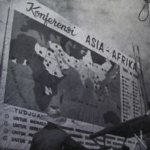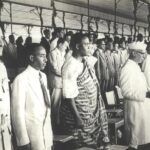by Shalmali Guttal
In a press conference in Timor Leste’s capital city Dili on May 14, top UN officials declared that the country is not at a risk of starvation from the global food crisis. According to the World Food Programme (WFP) Country Director Joan Fleuren in Timor Leste, “The Government is working hard to increase its imports” and sell it at subsidised prices in an effort to manage the situation and ensure that there is no food crisis. (1) The Ministry of Agriculture estimates that annual rice consumption in Timor Leste averages about 83,000 metric tones (mt) of which, 40,000 mt are produced domestically. The shortfall is made up through imports which are already at 50-60,000 tones and rising. Acting Special Representative of the Secretary-General to Timor Leste, Reske-Nielsen, suggests that rice imports provide the Timorese Government with time to come up with medium and long term solutions. (2)
This view, however, differs significantly from that of many Timorese analysts, who fear that the country is locked into a dangerous dependency on imports to meet its food needs and already displays the early symptoms of a chronic food crisis. About four months ago, before the onset of the food crisis, the price of rice was 14$ – 16$ for a sack (about 35 kg). Now it averages about $25 a sack in Dili and is significantly higher in rural areas — if it reaches there at all. And despite the Timorese Government’s recent move to subsidise rice prices, there simply isn’t enough subsidised rice to go around. Most of it is swallowed up in Dili and according to Dili locals, a significant portion is sold at much higher prices by rice traders, especially in rural areas. Like most net food importing countries, Timor Leste does not have control over the import prices of rice and other staples. Equally serious, it does not have an effective public distribution system to ensure that food imports reach its rural population. Relying on private companies to handle distribution, the Government cannot even ensure that those who need subsidies most are actually able to avail of them. According to Elda Guterres da’Silva from KBH, a Timorese organisation dedicated to vocational education, (3) “The new government is out of touch with problems in the rural areas; it seems intent to put in a market system and this will increase the number of poor people. Only those with money can buy rice.”
Hunger is not new to Timor Leste. In 2004, reports of severe hunger and starvation were reported among tens of thousands of households in at least five districts and people in eleven out of thirteen districts survived largely on food aid. (4) Majority of Timor Leste’s population of one million (approximately 80 percent) resides in rural areas and is engaged in subsistence agriculture. Local production is not sufficient to meet the population’s food needs throughout the year and in 2001, about 80 percent of villages were estimated to face food shortages at some time during the year. (5) While food shortages during the lean period of an agricultural cycle are common in subsistence economies, a combination of historical factors and recent government policies are entrenching what many Timorese fear will be a long term, chronic, food crisis. Although reliable updated consumption statistics are difficult to come by, reports from some rural areas indicate that there is already not enough food and people can only eat once a day.
The problem is not only imports, but also rice itself. According to Arsenio Pereira of HASATIL (6), a Timorese organisation committed to sustainable agriculture, “There is too much dependency on rice. Indonesians promoted this dependency. Before Indonesian occupation, there were a variety of staples that Timorese people ate, especially in dry and mountainous areas, but the Indonesians insisted that everyone grow and eat rice; current government food policy is also focussed on rice.” This view was echoed by other people I talked with in Dili last week, who pointed out that even today in rural areas, there are many other staples that are consumed — what they call traditional foods. Pereira explained, “Rice is important, but not the only food. We have more than 10 varieties of beans, 20 varieties of maize, and varieties of yams, cassavas, bananas and sweet potato. But if these traditional foods are not given importance, they will be lost and we will be entirely dependent on rice.”
Although Timor Leste’s rural areas are generally cut off from even the minimal level of services available in Dili, hunger is as high in Dili as in many rural areas. Dili residents are almost entirely dependent on rice as their staple food, unlike rural communities for whom traditional foods still form an important part of their daily diets.
INDEPENDENECE BRINGS DEPENDENCE
But Timor Leste’s food shortages have as much, if not more, to do with the country’s policy regime as with low production. Upon the insistence of international donors, the World Bank and the International Monetary Fund (IMF), the country’s post-war reconstruction has been modeled on free market economics with severe restrictions on direct governmental involvement in providing public services, price supports and building up a strong domestic economy through investment in public infrastructure in crucial areas such as agriculture, food security, education and local cottage industry. The economy has been radically liberalized and the government is seeking to make the country a haven for private investors through tax holidays, land concessions and other privileges. Job creation, which could have received a boost through public investment, has been left to the dynamics of free market competition.
At least a quarter of the country’s arable land is being handed over to private companies (mostly foreign with some local collaboration) for growing agro-fuels, particularly sugarcane and jatropha. Agricultural land is also dogged by intensifying conflicts among competing claimants, and among farmers and private concessionaires. Timorese locals report that import contracts for rice and other goods and economic concessions are routinely handed over to foreign companies without a public tender process and “single sources” that are personal contacts of the country’s senior leadership. Rural communities do not usually even know that their lands — which are their only assets — are now the “property” of a private company and that they are soon to become contract labour on the lands that they have tended for generations. In the upland district of Ermera, conflicts remain unresolved between local coffee producers and Timor Global, a private company that secured a 25 year concession on all coffee growing lands in the district. According to Antero da’Silva, a professor at the National University, “The government’s plans are oriented towards making farmers more dependent on markets, imports and free trade, and not on independence.”
In the agriculture sector, the World Bank and bilateral donors (particularly Australia and the US) have focussed almost entirely on rice and a handful of cash crops such as vanilla and coffee and at the cost of other staples that constitute the country’s traditional foods. However, decades of intensive and chemically driven rice production during Indonesian occupation have resulted in serious soil degradation in several rice growing areas, bringing down yields and rendering the land unsuitable for producing other crops. “Land used for rice production during Indonesian times cannot be used now, it was destroyed because of too many chemicals to intensify rice production. The soil needs to be regenerated,” says da’Silva.
Such ecological considerations are not a priority under the post-independence donor regime in which official agriculture policy has continued to promote intensive, chemical inputs driven agriculture, but under free market conditions. Over the past six odd years, production inputs and rural transportation have become so costly that that locally produced rice cannot compete with imported rice in price and quality. Genetically modified seed trials are now reportedly being conducted in Betano and Maliana districts by “experts” from an Australian company through a project called Seed of Life. “The donors and WB trying to increase production using hybrid seeds, chemical fertilisers, etc. Their emphasis is not on increasing food security through internal capacity and resources, or by promoting local foods, but by importing rice and food from outside, including food aid from WFP and FAO,” adds Pereira.
The combination of land conflicts, rising and unaffordable agricultural production costs, and hunger has prompted many rural people to move to Dili and large towns looking for jobs. But life in the city is as much, if not more of a struggle as back home in the village. The adoption of the US dollar as the national currency has inflated the prices of even the most basic food necessities. And then there is the international aid industry that set up shop in Dili immediately after the 1999 referendum. Timor Leste recieved over US$ 3 billion in “reconstruction assistance,” much of which went to pay for bloated salaries and facilities for international “experts.” Faithfully following market signals, the food and service industries adapted themselves to servicing the needs of an international community flush with reconstruction cash. A domestic, business elite emerged from among those who had land and houses to rent to expatriates and assets to invest in restaurants, hotels, supermarkets private security, etc. The upshot of all this was the cost of living in Dili rocketed way above the average salary of ordinary Timorese — US$ 30-60 per month. Even the earlier “pre-crisis” cost of rice (which is now remembered fondly by the Timorese) of US$ 14-16 per sack was a big burden on an a family with children and elderly to feed.
The promised foreign investment that was supposed to create jobs did not arrive. Start-up and operating costs are high in Timor Leste, as water, electricity, telecommunications and equipment are all extremely expensive. Restaurant owners and expatriates prefer to shop at supermarkets that sell imported products rather than local produce and meat markets, citing concerns of hygiene and quality. The lack of public investment in education and vocational training has resulted in an extremely small number of young people who are considered employable by the aid industry and its private sector appendages. According to Rigoberto Monteiro, General Secretary of the Timor Leste Trade Union Confederation and member of the National Labour Board, only 500 jobs are available every year in the public and private sectors. Majority of those looking for work in the city end up in a weak and unpredictable informal sector, without secure and sufficient income.
Little wonder then that hunger and malnutrition are as high in Dili, alongside markets filled with food, as they are in the country’s villages.
In 2005, Ben Moxham, a researcher with Focus on the Global South based in Timor Leste poignantly observed, “While Timor’s harsh climate is partly responsible, the question that screams to be asked is why a nation of just under a million people, which in the last five years is supposed to have received more donor funds per capita than anywhere else in the world, is going hungry.” (7)
COWBOY CAPITALISM RIDES THE RANGE
Further to the west, in a country that underwent a similar process of post-conflict reconstruction 17 years earlier than Timor Leste, severe hunger and malnutrition are become increasingly visible alongside an explosion of affluence and a concentration of wealth. As a ward of the international reconstruction and development industry since 1991, Cambodia too adopted the free market model demanded by international donors, the World Bank and the IMF. What has resulted is a cowboy capitalist economy where practically everything is for sale to the highest bidder. Small pockets of plentiful consumption are surrounded by large areas of scarcity and deprivation.
Economic growth has averaged at 11 percent over the past three years, spurred by booms in the tourism, garment manufacturing and real estate sectors. But not everyone has benefitted from these booms. Agriculture and fisheries, the mainstays of the majority of Cambodia’s population, have been systematically assaulted by free market policies, privatisation and liberalisation. The private sector has been aggressively promoted in every possible sphere — the economy, environment, agriculture, education, health, water supply, etc. Cambodia’s multilateral creditors, the World Bank, IMF and the Asian Development Bank (ADB), have demanded and achieved complete government “disinvestment” in essential public infrastructure, supports and services, and exhorted the country’s peasant farmers and artisanal fishers to compete in a free market that they are completely ill equipped for. As a result, farming and fishing has become increasingly precarious occupations for rural families, driving them into debt traps and eventually forcing them to abandon agriculture altogether.
Ruling elites in the Cambodian Government have facilitated a frenzy of land-grabbing in both rural and urban areas creating landlessness, homelessness and destitution at a scale never envisaged by ordinary Cambodians who really believed that they were in for better times. Vast tracts of fertile agricultural lands and rich forests (ranging from 10,000 to 300,000 hectares) have been given away as economic land concessions to foreign companies under 99-year leases for industrial tree plantations, agribusiness activities, tourist resorts, golf courses and other recreational facilities. Economic concessions extend to fishing areas, wetlands and even the country’s coast and islands. A growing, wealthy, domestic middle class has also joined the band-wagon, buying up land from small farmers and fishers unable to meet the rising costs of agricultural production, health care and food. Many of the country’s powerful bilateral allies (for example, China, Vietnam, Thailand and Singapore) have also claimed their piece of the prosperity pie through exclusive, no-bid contracts for infrastructure, energy, mining and oil and gas projects.
The prosperity of the domestic (largely urban) elites and foreign land owning companies classes has resulted in severely negative impacts among the rural and urban poor and even the middle classes, creating new vulnerabilities and poverty. Inflation is high (almost 11 percent at official count, though locals say that it is actually higher) and the cost of food and staple goods have increased sharply, creating twin crises of hunger and malnutrition. According to Boua Chanthou, the Director of PADEK, a Cambodian NGO working on integrated community development in more than 500 poor villages in Cambodia, “A crucial factor related to food is land; Cambodian farmers do not own enough land. A recent study shows that 60 p[ercent of Cambodian farmers are either landless or own less than half a hectare. How can they produce enough food for even their own consumption? A family of five people needs at least two hectares of land to be able to produce enough food. The Government needs to act quickly to implement social land concessions and redistribute land to the farmers.”
The problem is not lack of food per se, but lack of access to food and the means to produce food among rapidly increasingly numbers of people who are being systematically stripped of their abilities to feed themselves. While it is true that much of Cambodia’s agriculture (including fisheries) is small-hold and susceptible to weather and climate conditions, Cambodia is a rice and food exporter and till recently, it was the sixth largest rice exporter in Asia. Large agribusiness companies such as Thailand’s Charoen Pokphand (CP) have established operations in Cambodia for producing animal feed as well as pig and chicken farming. High grade Cambodian rice is grown under contract for Thai businesses in the western part of the country while Vietnam buys lower grade rice grown in the eastern part of the country. Fish from Cambodia’s Great Lake, the Tonle Sap, is exported to neighboring countries and to the numerous restaurants and resorts that cater to the tourist industry.
And yet, the people who produce this food are poor, hungry and malnourished. Since agricultural production does not provide sufficient food for the entire year, nor does it bring them enough income, they don’t have the cash to buy rice and food from markets that are over-flowing with food. Other important sources of food for rural families are the natural commons such as forests, wetlands, rivers and lakes from which they harvest food and medicinal plants. But the enclosure of these resources by private interests, as well as their degradation resulting from over-use has cut off rural communities from their last, fall back source of food and nourishment.
A Food Security Atlas launched in February 2008 by the WFP shows high levels of hunger and malnutrition in the country, especially in areas plagued by land-grabbing, economic land concessions and extractive industry. Included in the 10 “hot-spot” provinces that are considered the most food insecure and vulnerable is Siem Riep, home of the famous Angkor era temples and the tourist mecca of the Mekong region. Province residents say that the boom in the tourist industry has served as a massive suction pump, sucking away resources from local communities and leaving them poor, hungry and vulnerable.
Says Chanthou, “The open market system to export rice is not working in favour of the poor, who do not have enough money to buy food when prices go up. Therefore, the Government needs to intervene. The Government has taken some positive action recently, but should have done more.”
CHRONICLES OF CRISES FORETOLD
In both Timor Leste and Cambodia, the roots of severe hunger, malnutrition and starvation were planted a long time ago. In the case of Timor Leste, they can be traced back to Portuguese colonialism and the imposition of plantation agriculture on a traditional, multi-crop agricultural system. But what we see today in both countries are not simply ghosts from distant colonial pasts. There have been significant (and nightmarish) events over the past few decades that have entrenched food deprivation among innocent civilians.
The report of the Committee for Truth and Reconciliation (CAVR) Chega! documents how famine was induced in Timor Leste in 1977-78 by Indonesian military occupation and the war against Timorese independence forces. (8) At least 80,000 people died of hunger and related diseases during this time as military objectives were more important to the Indonesian military than the lives of occupied peoples. During the same period in Cambodia, millions of Cambodians were brutalised and starved by the Khmer Rouge in labour camps that were set up — ironically — to grow rice for the Khmer Rouge and its most important ally, China. In both countries, food and agricultural systems were militarised and fractured, and food itself became a weapon by which power was wielded.
The transitions of both Cambodia and Timor Leste to independent, “post-conflict” nation states did not result in freedom from hunger for the majority of their populations. Certainly, gains were made on many fronts — social, economic and political — but these gains were not equitably shared by all , nor did they include rebuilding the potential of families and communities to feed themselves. On the contrary, the economic blueprints devised by donors and creditors emphasised cash crops over food crops, and placed domestic producers and workers at the mercy of markets in which they had no leverage or space to maneuver. The World Bank, IMF and ADB were more interested in whether commodity markets functioned efficiently and whether suitably “enabling environments” for the private sector had been created, than whether local people had enough to eat.
Today, all the global trends related to rising food prices are reproduced at local levels in Timor Leste and Cambodia: rising costs of fuel and essential goods, doubling of the price of staples, diversion of grain to bio-fuels and animal feed, the conversion of agricultural lands to industrial, housing and tourism estates, the hoarding and manipulation of food supply by traders, profiteering by speculators through futures trade, etc. And as in every developing country, rising prices of rice, wheat, soy, corn and other staples have not translated into higher prices for small-scale producers or into increased food security for them. On the contrary, middlemen, traders, speculators and agribusiness companies are making a killing — literally.
But even when world food prices come down, unless economic and agricultural policies are drastically amended in both countries, food shortages, hunger and malnutrition are not likely to abate. “Now we can see the negative impacts of the free market” said Mateus Tilman from Kdadalak Sulimutuk Institute (KSI), an organisation working on land reform in Timor Leste. According to Tilman and HASATIL’s Pereira, resolving land conflicts and governmental investment in rural infrastructure are crucial steps to tackle food shortages and hunger. “Our dream is to have comprehensive agrarian reform and empower our farmers. Land must remain in the hands of the farmers” Tilman adds. KSI works closely with HASATIL, whose members are promoting food sovereignty as a long term solution to the country’s food crisis. “We need to plant more local food crops, build independence in food and reduce dependence on imported seeds and fertilisers. We also need to promote local knowledge among farmers — use and nurture their local knowledge and build more; and we need to provide information to farmers about climate change, trade and other related issues.”
Unfortunately, there are few such visionaries in Cambodia. Most development NGOs are reluctant to take on the country’s elite power structures and confront national economic policies that are accelerating land and resource crises and reproducing the food crisis. However, local farming, fishing and indigenous communities are organising and federating in an attempt to build a strong and collective national voice.
Mirroring trends elsewhere, the tragedy in both countries is not that there is not enough food, but that the food does not reach everyone who needs it. Even in instances of actual food shortages, food is available in neighboring areas and countries, and with timely governmental intervention, serious food crises can be averted. But as has become evident over the past year, the world can have record grain production as in 2007 (2.3 billion tons) and still people can be impoverished by rising food prices. (9) The high profits recorded by agribusiness companies and futures traders in 2007 show that food has become a commodity for speculation and profit making. While governments in developing countries, especially net food importing countries, are finally taking some actions to protect their economies and food stocks, it is uncertain whether they will have the courage to move away from the economic orthodoxy of free market theory preached by the World Bank and the IMF, and commit to the drastic transformations of national economic, agricultural and food policies needed to build genuine, long term food security.
It is extremely important that we start to rebuild the capacities of our communities and societies to feed ourselves. La Via Campesina’s proposed paradigm of peoples’ food sovereignty offers the most appropriate and adaptable selection of strategies to do this. For Timor Leste and Cambodia, peoples’ food sovereignty can ensure that independence, national reconstruction and peace building find longer-term, sustainable and home-grown expressions.
* Shalmali Guttal is a senior associate with Focus on the Global South. She can be contacted at [email protected]
NOTES
1. See UNMIT Weekly number 42:
http://www.unmit.org/unmisetwebsite.nsf/p9999/$FILE/42.weekly.english.190508.pdf
2. ibid
3. KBH is the acronym for Knua Bua Hatene, a Timorese non-governmental organisation that provides vocational education to youth and vulnerable groups to facilitate employment and food security.
4. East Timor: a Tiny Half Island of “Surplus Humanity. Ben Moxham, February 18, 2005. http://www.counterpunch.org/moxham02182005.html
5. ibid
6. HASATIL is the acronym for Hametin Agricultura Sustentavel Timor Lorosai which means ‘Strengthening Sustainable Agriculture in Timor Leste in Tetum, one of Timor Leste’s national languages.’
7. ‘East Timor: a Tiny Half Island of “Surplus Humanity”‘. Ben Moxham, February 18, 2005. http://www.counterpunch.org/moxham02182005.html
8. http://www.cavr-timorleste.org
9. Making a Killing from Hunger. Against the grain, April 2008, GRAIN. http://www.grain.org/atg/


